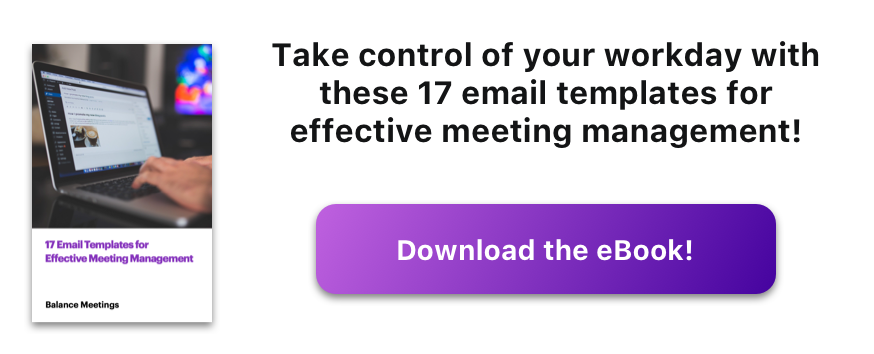It feels like the number of meetings we attend has grown exponentially since the COVID-19 pandemic began, and many of us started teleworking.
When we used to travel to meetings – either by walking to a conference room or by leaving the office to go somewhere else – it was impossible to stack all of our meetings back-to-back.
Now, it only takes a couple clicks to sign off of one virtual meeting and to join the next one.
The Detriment of Back-to-Back Meetings
Scheduling back-to-back meetings allows you to do one thing: go to more meetings.
Attending more meetings quickly results in exhaustion, burnout, and Zoom Fatigue, meaning the actual time you spend in meetings is not the only thing affecting your productivity. Non-stop meetings can leave you too exhausted to concentrate on work during the minutes that you do have free.
Another problem with back-to-back meetings is that they cause us to perpetually run late to meetings.
And, Without space between meetings we barely have time to use the restroom, let alone follow up on what was discussed during the meeting.
New Apps Are Making This Problem Worse
Over the past year, dozens of new apps have been launched that make it easier to schedule meetings.
While helpful at the moment of scheduling, downloading a meeting app that makes it easier for you to schedule more meetings is not the answer to achieving effective meeting management. In fact, these apps can ultimately have the opposite effect.
Meeting scheduling apps are helpful because they automate an often monotonous task, but they also remove the need for you to stop and prioritize the most important ways to spend your time.
The Solution
One obvious solution is to try to stagger your meetings, so they are not back-to-back.
Unfortunately, the staggering solution falls short for a few reasons:
- The more schedules you have to coordinate, the fewer options you have to select from to schedule this meeting – so staggering is not always possible (at least not for everyone)
- Meetings end up being every other hour, so you still do not have time for deep work between them
- Your calendar starts to look free, so people will add meetings during the time blocks between your meetings throughout the week
The best solution for your personal meeting management is to stop accepting every meeting invitation you receive.
If you are not going to contribute to a meeting, are likely to multitask, or the meeting is not mandatory, consider skipping it.
It is easiest to do this with a little extra planning at the beginning of the week with the 5 Minute Calendar Cleanup.
When you do the 5 Minute Calendar Cleanup, you can also add calendar events called “Blocked” to the 2-4 hour periods throughout the week when there are no meetings currently scheduled.
Pro Tip for Meeting Leaders
When scheduling meetings, ask yourself the following questions:
- What is the purpose of this meeting, and what is the optimal meeting size?
- Who really needs to be at the meeting? (If these people cannot attend, the meeting should be cancelled).
- Can anyone be left off of the meeting invitation, or moved to the optional line?
When scheduling more than one team meeting per week related to a single project, try setting them up to be on different days of the week.
Chances are, some of the issues you were going to discuss later in the week will have been resolved by the time the next meeting comes around. Your responsibility as the meeting leader is then to cancel the later meeting if it is no longer needed.
Key Takeaway
Instead of scheduling meetings back-to-back or every other hour, try to be more intentional with your time (and with others’ time). Think carefully before you accept, and before you send, meeting invitations.

